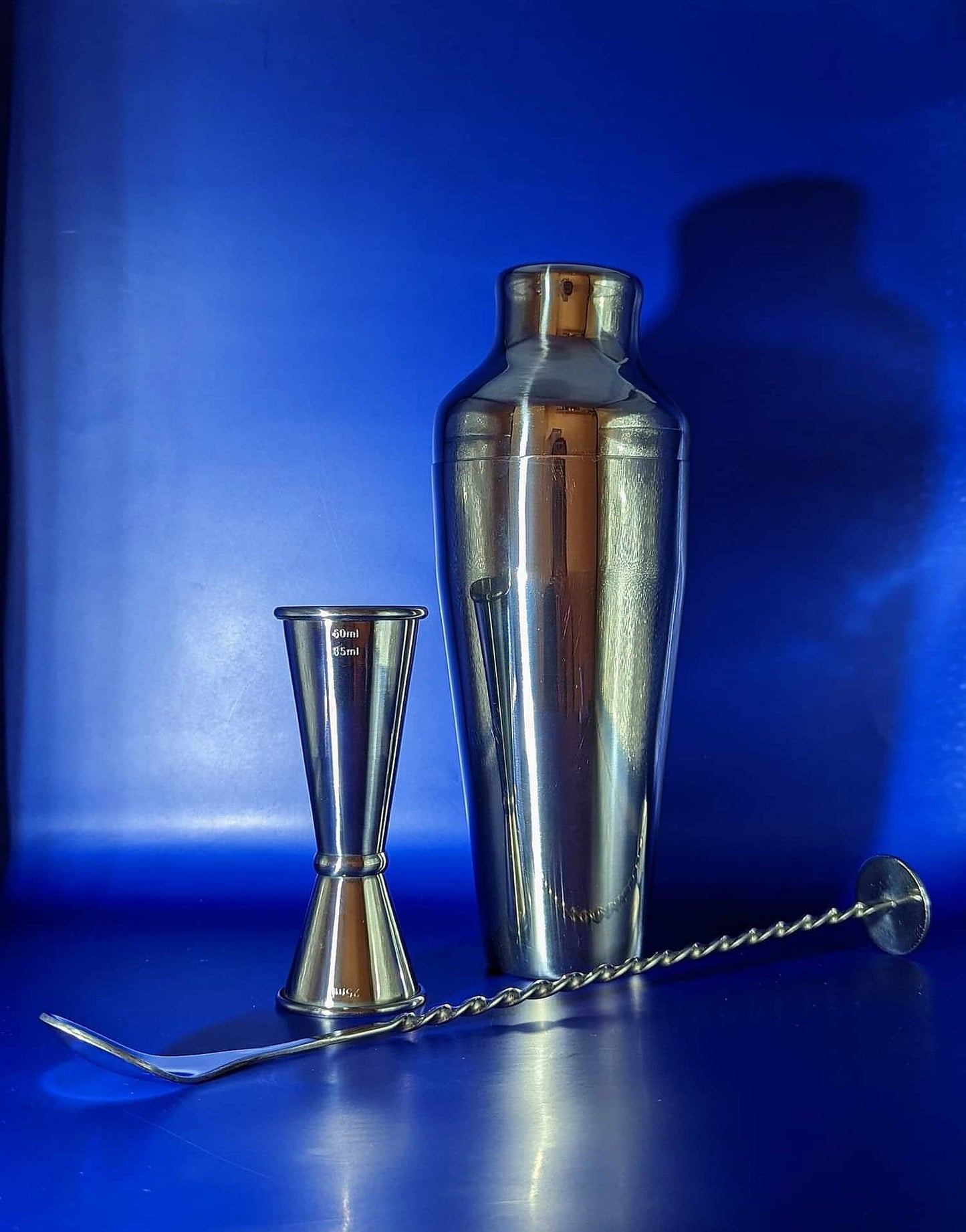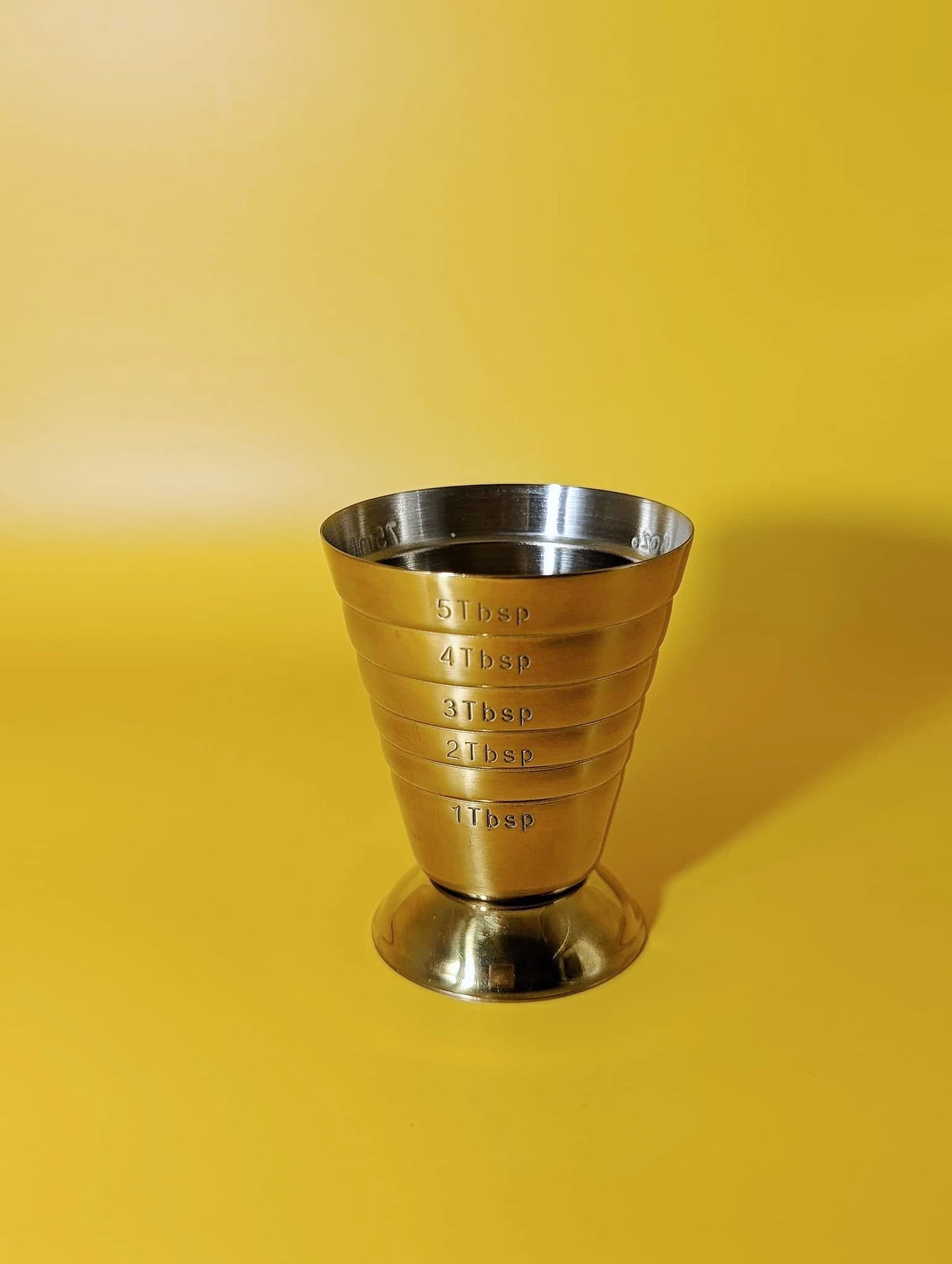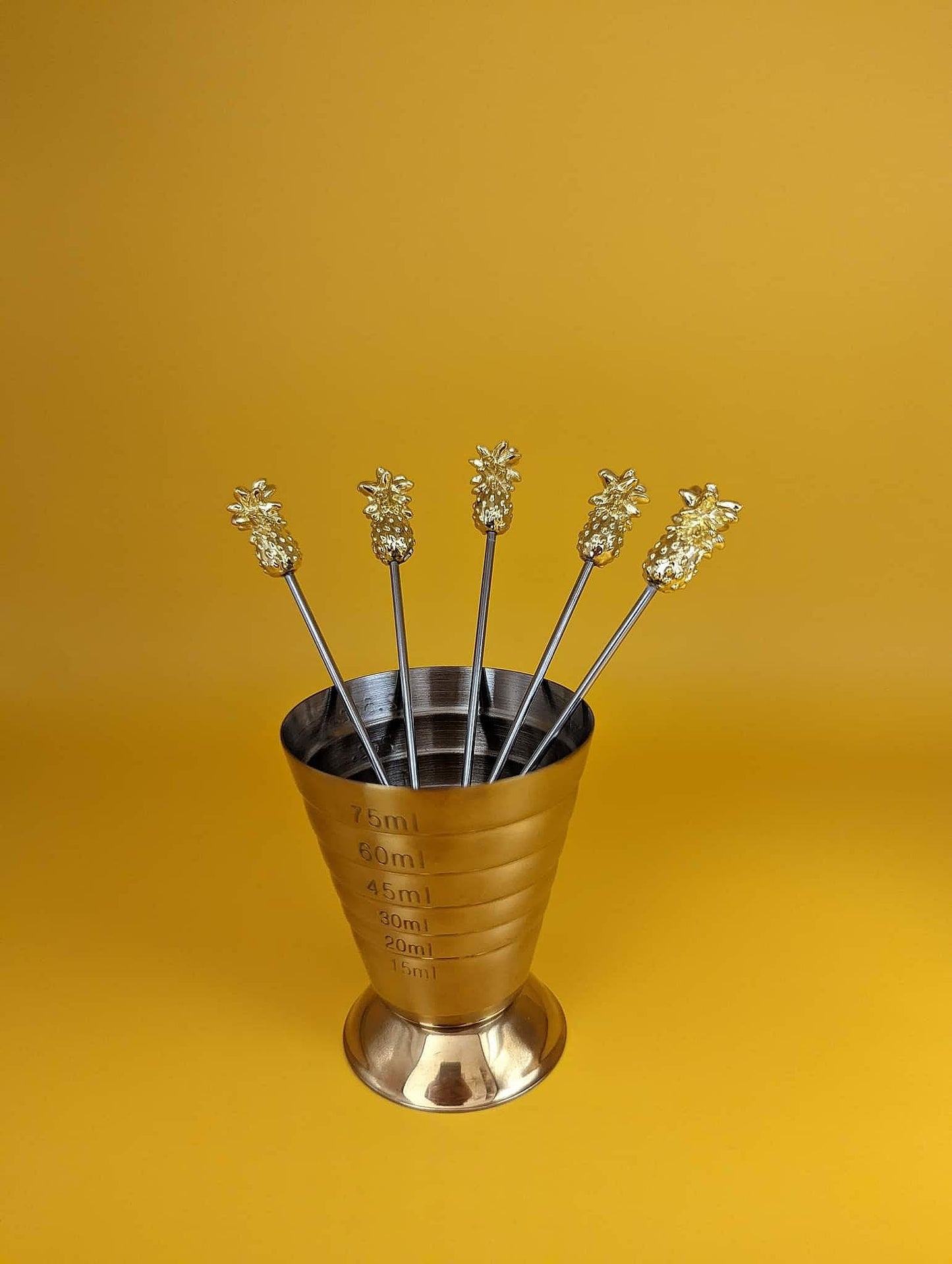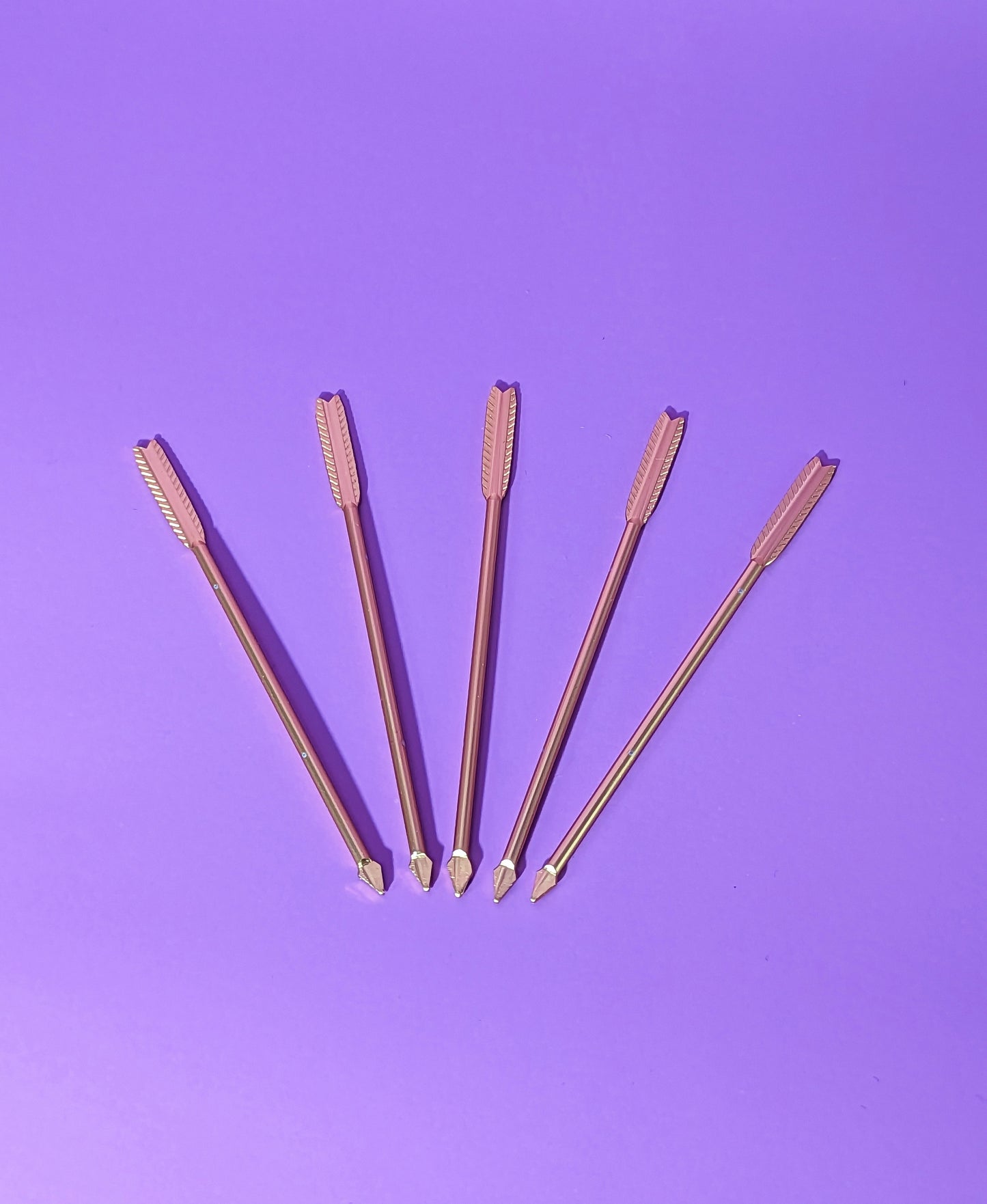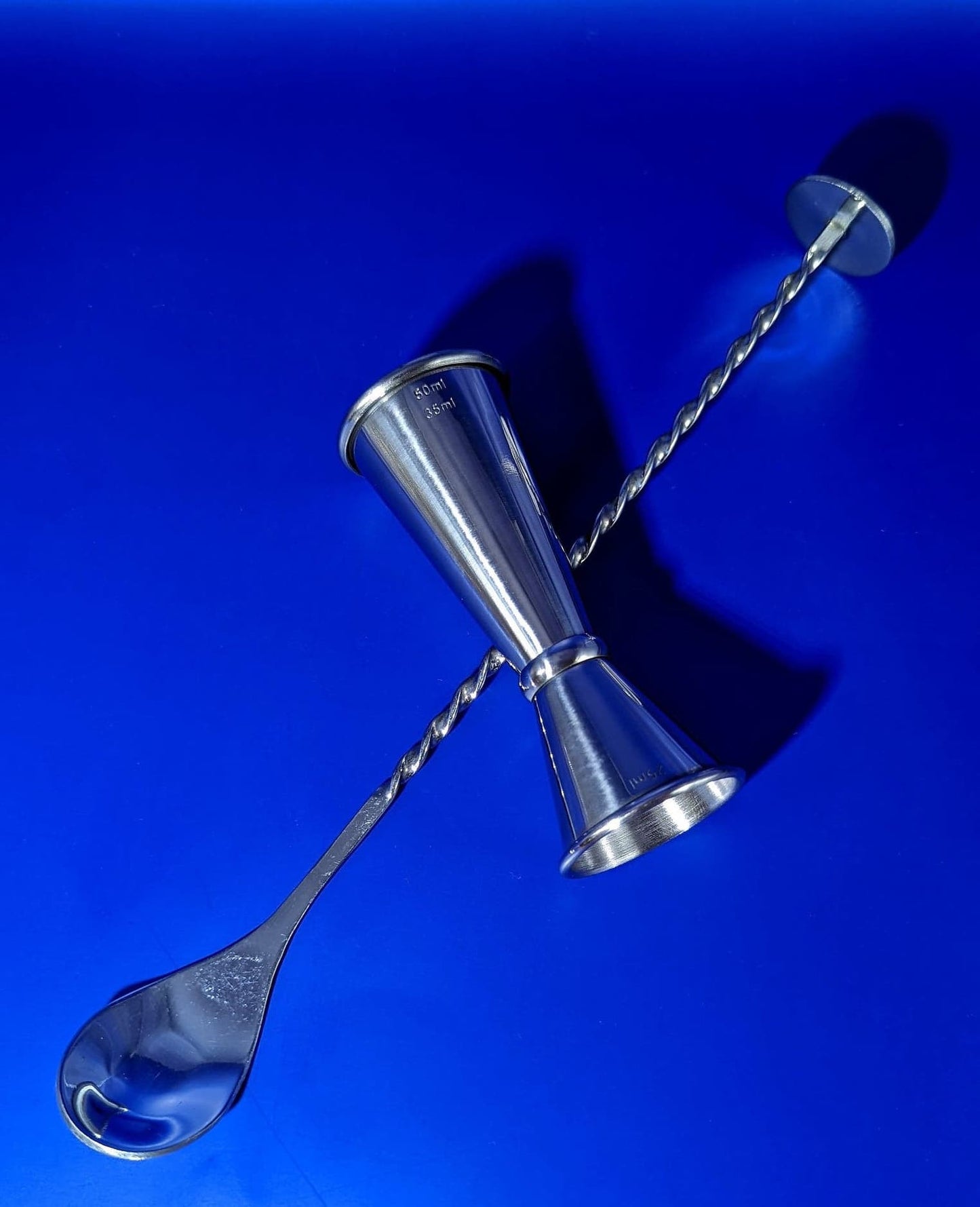
Jiggers
The jigger is there to help ensure you strike the right balance when creating consistent cocktails. When it comes to picking the right jigger for you, ultimately it boils down to if you have a steady hand and whether you have a style preference for one of the following:

Jigger Tips
- When holding a double jigger, place the ‘waist’ in between your thumb and forefinger or your forefinger and middle finger to allow you to flip the jigger easily.
- When practising, try and pour slowly and steadily, with the jigger at eye level, to the correct measurement line (a standard single shot in the UK varies between 25ml-35ml). At this point, you'll see a meniscus form over the top of the jigger. A ‘whatus!?’, we hear you cry. If you look closely, you’ll see a curve forming in the liquid owing to the shape of the bowl (long story short, it’s physics), so it’s best to stop at this point to avoid wasting the spirit.
- If your jigger has ounce markings versus ml, you’ll need to fill the shorter side up to where it is marked 1oz (30ml) and then 2oz in the larger side for a double shot.
- If you’re using the jigger to measure other ingredients beyond spirits, make sure you measure the thinnest ingredients first to ensure accuracy; for example measuring ingredients such as honey first will mean you have less of the spirit in the mix.
- Don’t be tempted to hold the jigger over the top of your mixing glass or cocktail shaker. If you overpour accidentally, your cocktail will be left unbalanced.
Cocktail Shakers
A general rule when it comes to mixing cocktails is to shake cocktails with non-alcoholic mixers and heavy ingredients versus mixing. A shaker ensures that you create an integrated and balanced flavour and that you are aerating the cocktails for a lighter mouthfeel, as well as chilling and diluting it.
Cocktail shakers can come in a range of sizes but if you love hosting a crowd, you should reach for a 700-800ml option. This can yield up to 3 cocktails or 2 generously sized cocktails. Otherwise opt for a 500ml for making one or two drinks at a time.
Choosing the right one is down to personal taste and experience. Here are the most common styles you will come across.

Cocktail Shaker Tips
- Don’t overfill your shaker! You need to give your ingredients plenty of room to move around and avoid spillages. Add ice last. A good handful or four or five ice cubes should do the trick.
- Once you have secured both halves of the shaker in place, tap it with your palm so you can hear the sound of the shaker sealing.
- Hold both pieces of the shaker horizontally and firmly together over your shoulder, pointing the lid to the back, in case the shaker comes apart.
- Give your shaker plenty of force and strike up a rhythm. There’s not one set style, so express yourself!
- When shaking, listen out for the sound of the ice breaking up and its mass decreasing or shake until the outside of the shaker frosts up. This should happen within a slow count of 10-15 seconds.
- For cocktails that have ingredients that don’t tend to mix well, such as eggs or cream, make sure you shake drinks for at least 30 seconds.
- Cocktails requiring egg should be shaken dry at first, before introducing ice.

Mixing Glasses
For those of you who are fans of spirit-forward drinks like the Martini and the Manhattan, you shouldn’t forget this essential. They may not have as much dramatic flair as a shaker, but mixing glasses ensure you maintain the texture and viscosity of your cocktail. They also control dilution, and you can literally see the magic happen before your eyes!
Make sure your mixing glass has a sturdy base so that it doesn’t slide around when you mix.
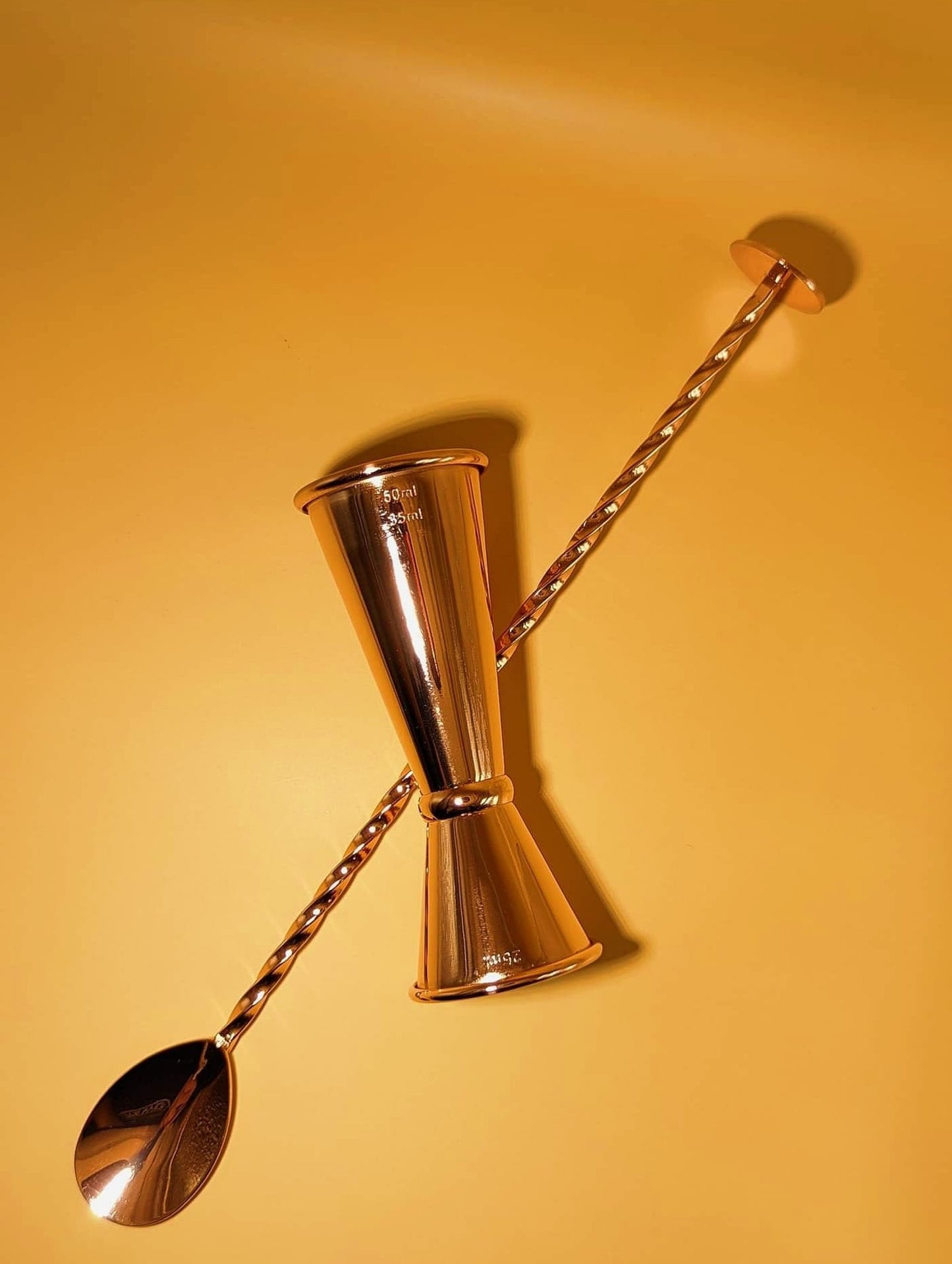
Bar Spoons
Whilst it’s tempting to use a standard spoon, the extra long and narrow handle of a bar spoon makes it much easier to reach down through the full length of your mixing glass. This will help to chill and dilute a cocktail, with the twisted stem encouraging even mixing.
Cocktail recipes often call for a ‘bar spoon’ of ingredients, so this will come in handy when measuring and placing ingredients into your cocktail. You can also use it to remove any extra pulp or seeds if your strainer hasn’t quite caught everything.
How you choose a bar spoon is down to personal taste and your level of experience.
- European style
The European style bar spoon includes a built-in masher for those cocktails that require you to muddle (crush) ingredients (such as fruit, herbs or other ingredients). If you’re feeling extra creative, you can also use this masher to perfect the layers in your cocktails. - Japanese style
Japanese style bar spoons are topped with a teardrop shape that’s weighted. This further helps to push the spoon through the ingredients whilst you mix. - American style
The American style bar spoon has no frills. It has a twisted handle, no muddler and usually has a red cap on the end.

Bar Spoon Tips
- Put your bar spoon in the mixing glass before you add the ice, otherwise you’ll be wrestling to get it to the bottom!
- Place the bar spoon between your thumb and two dominant fingers and focus on letting your fingers do the work, not your wrist.
- Perfect the art of making your stirs as smooth as possible. The choppier and louder the movement, the more air and extra dilution you introduce into the drink. This will result in less of a smooth mouthfeel to your cocktail.
- How long you stir down your cocktail is often down to personal taste, but 20 seconds of stirring in each direction should do it!
Strainers
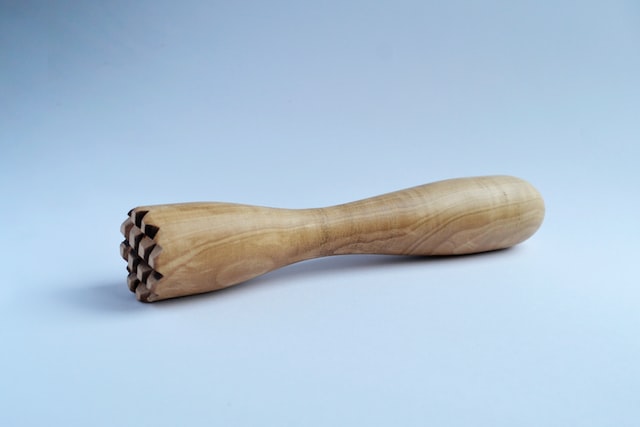
Muddlers
If you don’t have a European style bar spoon, a muddler is essential for cocktails requiring fresh fruits and herbs. The muddler can crush these to release juices and oils needed in cocktails such as a Caipirinha or Old Fashioned.

Citrus Press
Also known as a Mexican Elbow, this is an essential when creating citrus focused cocktails.
















